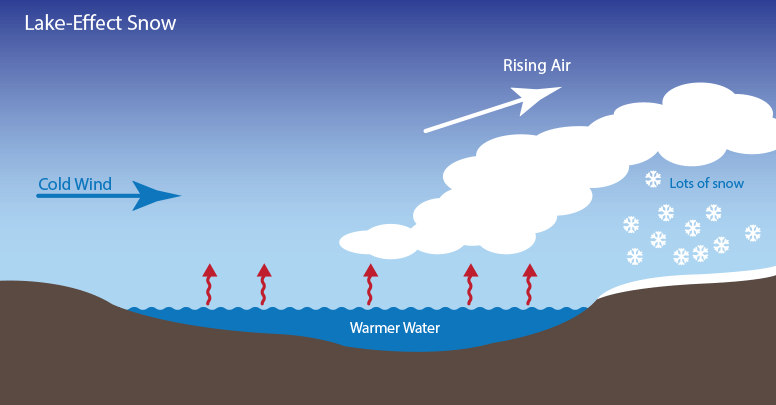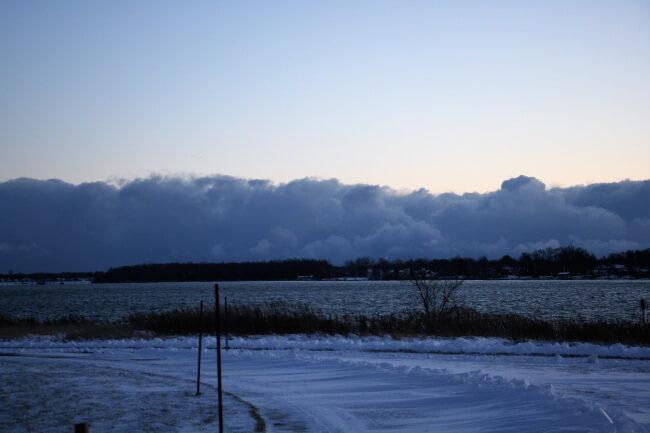We’re in the thick of winter and it seems to snow on a near-daily basis here in Buffalo.
We’ve found that residents from out of town are surprised to learn how much snow Buffalo actually gets. But during a snowstorm, depending on where you live in the Buffalo area, you may get multiple feet of snow at a time — or almost nothing.
Why exactly does Buffalo get so much snow? And why do some places in Western New York seem to get hit particularly hard?
Lake Effect Snow in Buffalo
The simple answer to why Buffalo receives so much snow, and why it is is often confined to a specific area, is lake effect snow.
According to the Washington Post, lake effect snow occurs most frequently during cold snaps in early winter. It happens when the transfer of heat and moisture from the warm waters of the Great Lakes to the cold air creates a shallow layer of atmospheric instability, causing air to rise quickly.

According to the National Weather Service, in the Buffalo area, when cold air from Canada moves over the still unfrozen, relatively warm Great Lakes, the lake moisture and instability from this temperature contrast build one or more bands of snow.
These bands are then deposited over locations downwind from the lakes, with some areas receiving much more snow than others, depending on their location and the wind direction.
Which Areas Get the Most Snow in Buffalo
Unlike a large Nor’easter, lake effect snow storms can be very localized, according to the National Weather Service.
During a storm, certain areas in a snow band may receive several feet of snow, while towns 5 miles away can get nothing.

The area south of Buffalo, known as the Southtowns, gets some of the most persistent lake snows in the area. This region includes Aurora, Blasdell, East Aurora, Elma, Hamburg, and Orchard Park.
According to the National Weather Service, Hills and mountains can cause lake effect snow systems to stall out and deposit a lot of precipitation in one spot — making the hillier Southtowns a frequent recipient of large snowstorms.
Reducing the Lake Effect Effect
If you’re not a fan of cleaning snow off your car every morning, there are some cities and towns in the Buffalo-Niagara region that get much less lake effect snow than others.
Generally, Niagara County (including Lewiston, Wheatfield and Niagara Falls) as well as northern Erie County (North Tonawanda, Tonawanda and Amherst) receive less snow than the Southtowns.
These less-snowy areas are also where the majority of our KenDev properties are located. We have apartments available in North Buffalo, North Tonawanda, Town of Tonawanda, City of Tonawanda, Kenmore, Niagara Falls and Sanborn.

However, they’re not totally off the hook — plenty of lake effect snow still falls on these towns as well as Downtown Buffalo.
Snow is a fact of life here, but knowing which areas to avoid if you’re not a huge fan of the white stuff can make your life a lot easier. And better understanding how lake effect snow works can help put these storms in perspective.
If you don’t like snow, you can take comfort in the fact that once Lake Erie freezes, lake effect snow is much less likely to happen. That’s because the moving air masses can’t evaporate water off of ice.
As we move further into winter, lake effect snow should become less frequent. We’ll still be on the hook for Nor’easters and other large snowstorms that travel throughout the U.S., but a frozen Lake Erie should provide some relief to residents of Buffalo and Niagara Falls.

 Fair Housing Notice
Fair Housing Notice 